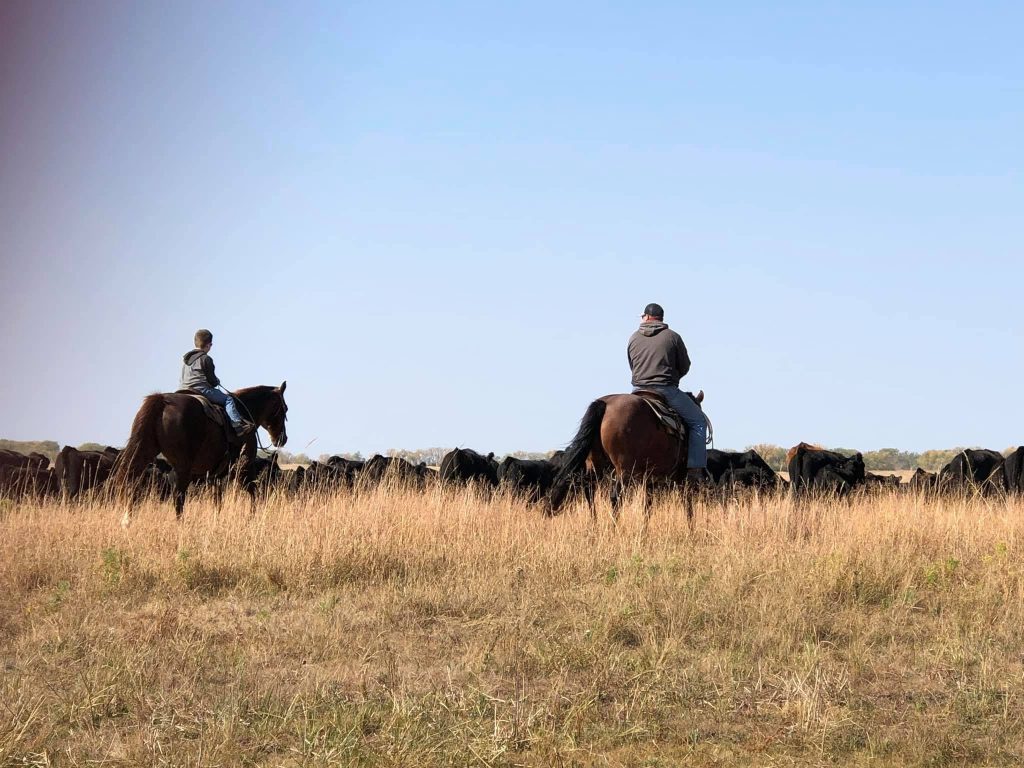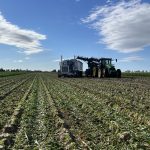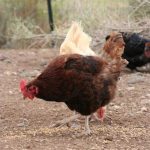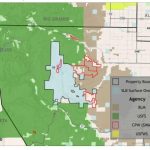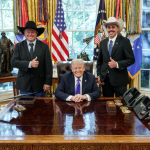Nebraska farmers and ranchers to benefit from Mesonet expansion
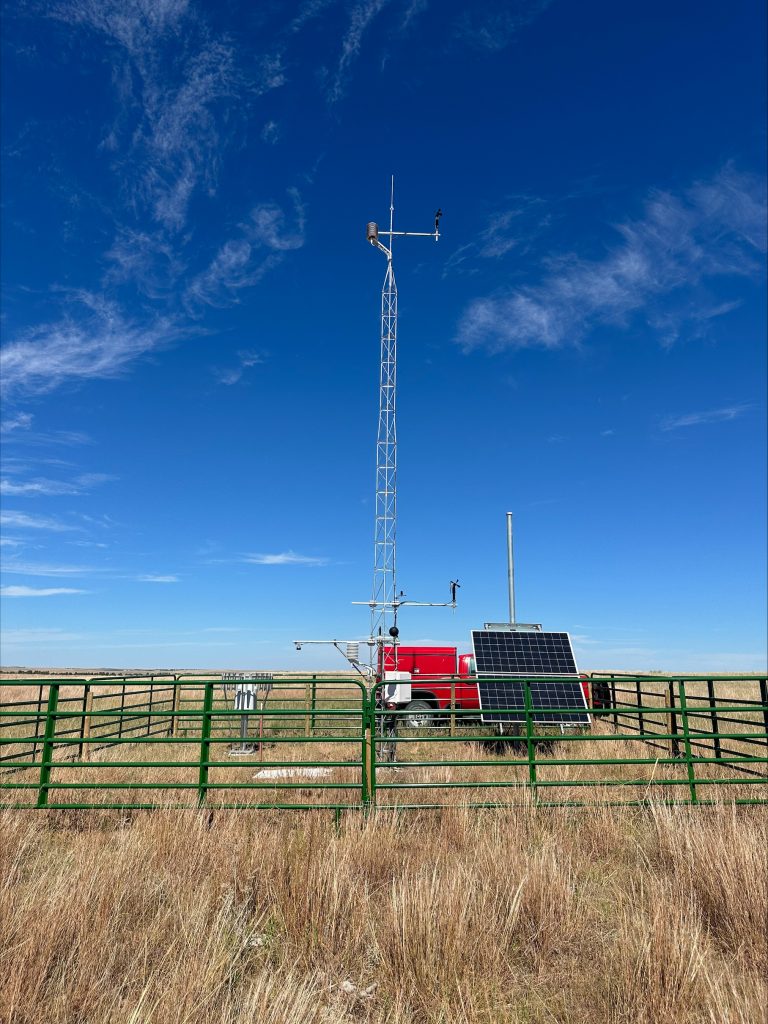
Mesonet3-RFP-110325
The recent expansion of the Nebraska Mesonet system is expected to benefit farmers and ranchers. The University of Nebraska-Lincoln announced on Oct. 21, 2025, that it was able to add 21 new stations to the Nebraska Mesonet system after receiving $1.48 million. The funding came from the U.S. Army Corps of Engineers, U.S. Department of Agriculture’s Farm Service Agency and Lower Loup and Upper Elkhorn Natural Resources Districts.
“Adding more Nebraska Mesonet stations across the state will help farmers in determining when the soil temperature is warm enough to plant. Soil moisture readings are very important because irrigation is so prevalent in Nebraska. Irrigators want to know a combination of how much rain fell, and how much water is in the soil already, so they can calculate how much water to apply. The extra mesonet sites also help with ‘spraying weather,’ to determine if it’s too windy or too dry to spray… as well as for crop maturity — how many growing degree days there are to determine when a crop is ready for harvest,” said Ruben Behnke, Nebraska Mesonet manager/applied meteorologist.
Curtis Gotschall, who ranches with his son and daughter near Atkinson, Neb., checks the mesonet site every morning. That’s why he pushed for having a station nearby and donated the ground for one of the 21 new mesonet stations, which were installed this summer.
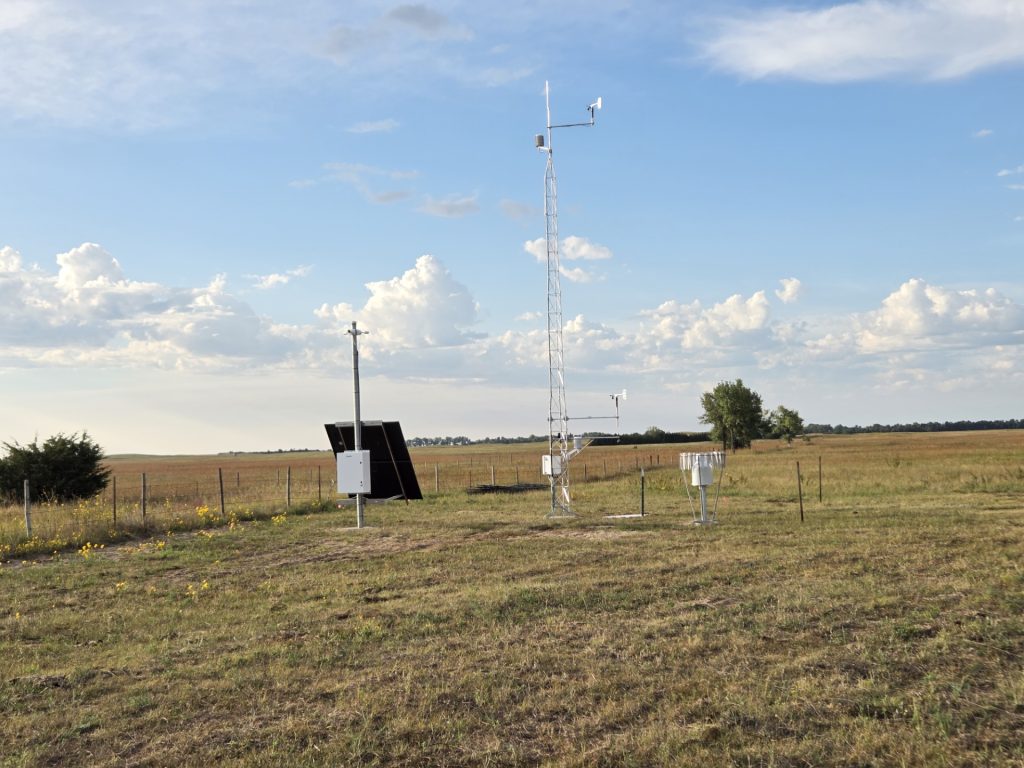
“The Heat Index gives us more info about humidity and temperature right in our area, and it’s very helpful in taking care of livestock. The Wind Chill factor is helpful in knowing if we need to put more hay out, since we cut prairie hay once and the humidity level is crucial. So having mesonet sites closer will help,” said Gotschall, who is a member of the board of the Upper Elkhorn Natural Resource District.
Many of the mesonet sites are close to cornfields, and rainfall rates vary so much in the northeast Nebraska area, Gotschall said. Not only is it important to have daily recorded information, but he collects data to look at maps and compare weather information from year to year, which is critical for decision making on farms and ranches.
“The list of uses is very extensive, and we have many more ideas here for data tools to put on our website. There are a lot of projects in the works,” Behnke said. More information will be revealed as funding availability becomes established.
Interest is growing rapidly in supporting the Nebraska Mesonet based at UNL’s School of Natural Resources.
“The USDA Farm Service Agency approached me because they need data, especially for identifying better CRP land and for determining the benefits of turning currently used land into CRP land,” Behnke said. Also, when applying for disaster relief, the additional 21 mesonet sites will help when showing if an area was very dry, extremely wet or experienced other weather disasters.
VITAL TO NWS
The investment in the Nebraska Mesonet also assists in vital operations at area National Weather Service offices. During active weather, the real-time data provides users the ability to quickly diagnose rapidly changing conditions including severe weather, rainfall, flooding, high winds and even wildfire conditions.
“Verification of such parameters yields improved warnings and forecasts downstream,” said Michael Moritz, warning coordination meteorologist, NWS in Hastings, Neb. The network expansion also provides meteorologists with a more dense network of observations, greatly enhancing the analysis of weather events in rural areas where observations are sparse, Moritz added.
In the long run, Moritz said, Nebraska Mesonet’s multi-sensor platform will give users the data needed to analyze drought, soil moisture, snowmelt runoff conditions and changing long-term climate trends, all of which are input parameters for the U.S. Drought Monitor and long-term outlooks for the region.

GROWTH AND FUTURE SUPPORT
The Nebraska Mesonet started in 1981 with five stations.
When Behnke came on board more than two years ago, the Mesonet had 57 stations, some in northeast Nebraska and others scattered throughout the western part of the state. Nearly 40 stations have been added over the past three years. Most of the stations are spread out over the northwestern two-thirds of Nebraska and the data is received through a cellular signal. Behnke and field technicians go out to maintain them two to three times a year. Once they’re set up, they run automatically.
“The new stations funded by the U.S. Army Corps of Engineers have greatly improved the spatial density of weather stations in north central Nebraska, so we now have drastically more data points for precipitation and soil moisture in areas where there has historically been a big void. These will allow for better assessment of drought and can provide early warning on flooding potential,” said Eric Hunt, Extension assistant educator of Agricultural Meteorology and Climate Resilience at UNL.
The goal is to get a mesonet station every 1,000 square kilometers or 386 square miles.
“I hope to increase the 94 to 200 in the next few years,” said Behnke, who was previously the assistant state climatologist at South Dakota State University and worked extensively with the South Dakota Mesonet. Behnke grew up on a dairy farm in Wisconsin, where his family also raised corn, wheat, alfalfa, oats and rye.
A huge show of support from contributors made the difference in propelling the Nebraska Mesonet to its current station count. Behnke also aggressively pursued this important project.
“It was me reaching out, and each contributed separately. When talking with farmers, the National Weather Service, and the Natural Resources Districts, there was huge interest in upgrading the older equipment. It’s not just expanding, it’s also upgrading the equipment and building a completely new website and data distribution system,” Behnke said.
There’s increasing interest from state and federal agencies and other supporters, including the Nebraska Emergency Management Agency and the U.S. Forest Service.
Because of a lack of funding that occurred a couple years ago, the mesonet is still in a re-building stage with the stations and with re-establishing the Nebraska Mesonet as the premier weather and soil observation network in the state.
Reaction from farmers has been relatively slow, mainly because the website needs updating, as they work to educate the state that the mesonet even exists, Behnke said.
The Nebraska Mesonet has sponsors for many of its stations. A co-op might sponsor a station because they want data from a district. The biggest sponsor is Nebraska’s Natural Resource Districts, which sponsors 28 stations spread out across the state, Behnke said.
The Nebraska Board of Educational Lands and Funds has been instrumental in helping Mesonet officials find state-owned land on which to locate these stations, which makes finding and funding sites much easier.
For more information, go to nemesonet.unl.edu.
